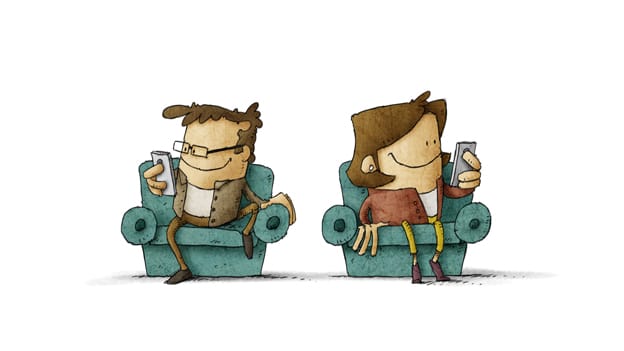How should HR tackle the rise in smartphone fatigue

What is the last thing you look at before you go to bed? Perhaps for many, it may also be the first thing to begin the day with - the ‘Smartphone’.
Research says that smartphone addiction could be causing a chemical imbalance in the brain that can eventually cause severe anxiety and tiredness. A group of people who were addicted to their phones were put through a test that looks at the chemical makeup of people's brains. A chemical that slows down signals in the brain called gamma-aminobutyric acid (GABA) was then measured. It was found that the ratio of GABA to an important neurotransmitter was off in people who had been diagnosed with too much internet and smartphone addiction.
As per Hyung Suk Seo, the Korea University professor who carried out the research; the changes in the brain could also be linked to problems with processing information and emotions. Earlier studies have linked GABA to vision and motor control along with other brain functionalities, including anxiety.
Rising Smartphone Fatigue at the workplace
A survey was conducted for more than one thousand workers commissioned by Thumbtel. All these users were provided with a second phone number for work. The result of the survey showed that:
- 6in 10 younger people were seen experiencing “Smartphone fatigue”
- 53% of full-time workers aged 25-34 claimed they were not able to disconnect from their job outside of working hours because of emails and messages received on their Smartphone
- 63% declared that their Smartphone was responsible for creating an imbalance between their work and personal lives
- 56% admitted that they regularly receive work-related calls during holidays, weekends or evenings
- 71% of senior managers claimed that they were regularly contacted for business purposes outside working hours
One of the main cause was related to not being able to separate personal communications from work-related messages
What can HR do to tackle the rising Smartphone Fatigue?
There are quite clear connections established between too much screen time Vs insomnia, tiredness, anxiety, depression, etc. Such lack of awareness around the issue needs to be tackled by the HR function under their wellbeing initiatives.
Let us see what simple steps can be included in the Eye Care Policy for preventing digital overload amongst employees under Well-being Programs.
- Update your Eye Care Policy
Despite two-thirds of employees using a smartphone for work, only a quarter of employers provide eye care reveals a survey by Specsavers Corporate Eyecare. As smartphones fall under the “display screen equipment” category of health and safety regulations, employers must revise their eyecare policy to ensure it reflects the use of modern-day technology. - Conduct Health Talks and Awareness Sessions
As per Mary Harrington from Smith College in Massachusetts, U.S, exposure to constant artificial light from smartphones and computers and not seeing as much light as possible during the day has a direct effect on body clock.Also, an illuminated screen immediately before sleep will affect the quality of your sleep and makes your eyes tired. However, research has confirmed that dimming the screen of your Smartphone does alleviate this concern to some extent.Also, while using a screen for work, one can install apps like Flux. Such apps continuously adjust the brightness and tint of the screen based on the time of day. Apart from this, do not forget to create a new nighttime routine. This must not involve a screen and can be replaced with reading a book, listening to music or meditating. All such similar information is important and must be shared by HR in awareness sessions from time to time. - Organize Ergonomics Workshop
Excessive scrolling and texting, many times overtax the soft tissues of the thumb, hand and wrist. As per Dr Alex Scott, an associate professor of physiotherapy at the University of British Columbia, “It’s just a warning sign.” Prolonged usability could develop inflammation of the tendons and end up by wearing a splint.Ergonomics Sessions will help address these crucial issues by providing a much better insight to employees on how to tackle such growing problems. - Conduct regular eye check-up camps
Constantly gazing at a screen close for a long period can cause spasms in the tiny muscles that adjust the shape of the lens. Geteye check-up camps organized for your workforce and remind them to blink often while using a phone while training them on eye exercises. One need to spend at least 20 minutes every morning to look outside and also practice reducing the screen time before going to bed. Provide discounted rate eye drops to your workforce so that they can keep their eyes hydrated while working on screen.
The way forward
People get into the habit of unlocking their screen and looking for messages even when not required at workplaces. Break this habit!
In this age of instant accessibility, a constant distraction from Smartphone takes its toll in terms of physical and mental health and also lowers productivity to a greater extent. Feeling constantly tired is a common complaint that has recently become widespread due to such addiction. Hence, such smartphone fatigue needs to be addressed in some form or the other under the wellbeing program by leaders of every organization.












